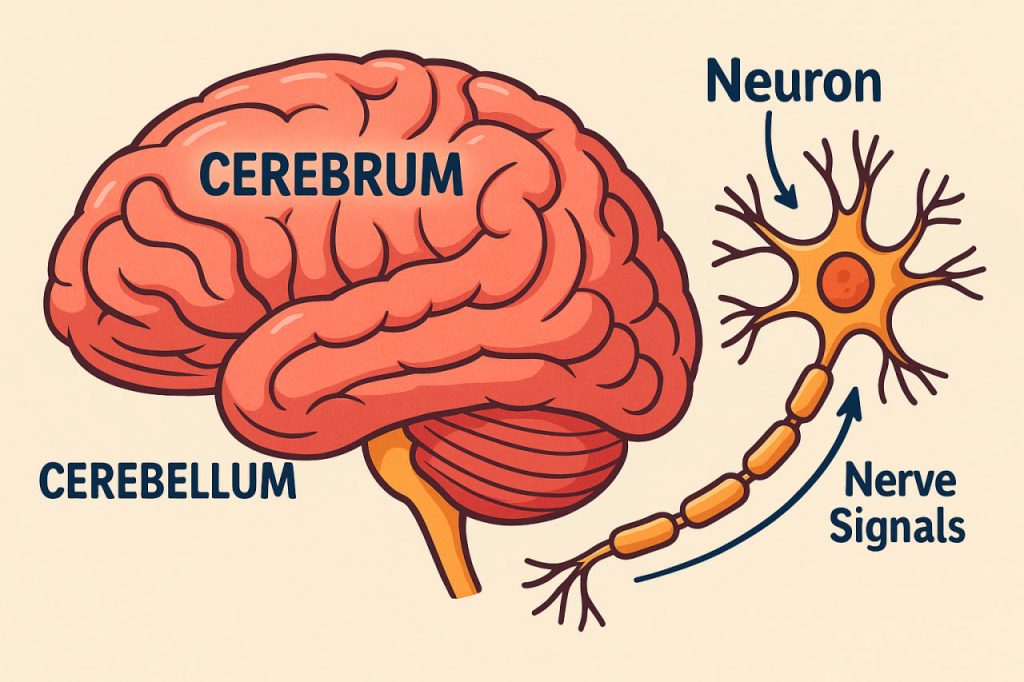The human brain is one of the most complex and fascinating organs in the body. It controls every thought, emotion, movement, and bodily function—often without us even realizing it. Despite its small size relative to the body (about 2% of body weight), the brain uses roughly 20% of the body’s energy resources. Composed of approximately 86 billion neurons, the brain works like a vast communication network, constantly processing information and sending signals. Its structure is divided into several key areas, each responsible for different types of tasks. Understanding how the brain works helps scientists develop better treatments for neurological disorders and helps people appreciate the organ that defines human consciousness.
Main Parts of the Brain and Their Functions
The brain is divided into three main regions: the cerebrum, cerebellum, and brainstem. The cerebrum is the largest and handles complex thinking, memory, language, and voluntary movement. It’s divided into two hemispheres—left and right—and four lobes, each responsible for specific functions like vision (occipital lobe), touch and movement (parietal lobe), hearing and language (temporal lobe), and decision-making (frontal lobe). The cerebellum, located at the back of the brain, controls coordination and balance. The brainstem, which connects the brain to the spinal cord, handles automatic processes like breathing, heart rate, and sleep.
How Neurons Communicate
Neurons are specialized cells that send and receive electrical signals. Each neuron consists of a cell body, dendrites (which receive messages), and an axon (which sends messages to other neurons or muscles). Communication occurs at synapses, where the axon terminal of one neuron releases neurotransmitters into the gap between cells. These chemicals bind to receptors on the next neuron, continuing the signal. This process happens millions of times per second, allowing the brain to process and respond to internal and external stimuli almost instantly. Learning and memory are shaped by the strengthening or weakening of these connections.
Left vs. Right Hemisphere
The brain’s left and right hemispheres control opposite sides of the body. The left hemisphere is generally more involved in logical thinking, mathematics, and language, while the right hemisphere handles creativity, emotions, and spatial awareness. Though both sides work together, certain functions are more dominant in one hemisphere depending on the individual. This phenomenon is known as lateralization. However, the popular idea that someone is entirely “left-brained” or “right-brained” is a simplification; most tasks require both hemispheres to work in cooperation.
Glossary
- Neuron – a nerve cell that transmits electrical impulses in the brain and nervous system.
- Synapse – the junction between two neurons where information is transmitted.
- Neurotransmitter – a chemical that allows neurons to communicate across synapses.
- Cerebrum – the largest part of the brain, responsible for thinking and voluntary actions.
- Cerebellum – the region controlling balance and coordination.
- Lateralization – specialization of certain functions in one hemisphere of the brain.


